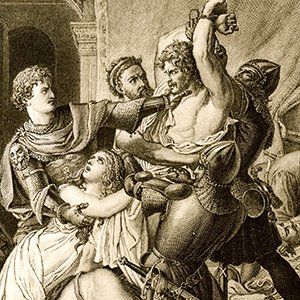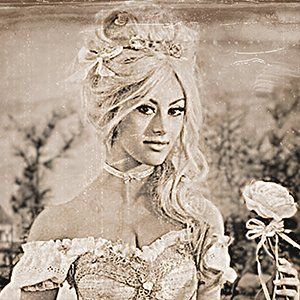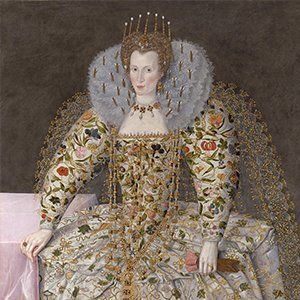Rogues' Gallery
Meet some of the 'spirited' individuals that populate nottingham's afterlife
Roger Mortimer
Roger Mortimer, 3rd Baron Mortimer and 1st Earl of March, has to take premiere billing on our Nottingham Ghost Walk Rogues Gallery.
Along with his lover; Isabella, Queen Consort to Edward II of England, Mortimer was responsible for open and successful rebellion against Edward II’s rule and for the king’s eventual capture, abdication, imprisonment and then alleged assassination, by inserting a red hot iron poker through the king’s anus.
King John I of England
King John is widely considered our worst monarch ever - hence there's never been a John II. A weak ruler, but with a terrible and deadly temper. During his reign, John managed to get excommunicated by the Pope Innocent III and England was polaced under an interdict, between 1209 and 1213, which meant that no religious services could take place, anywhere in England.
During the year 1212, John had 28 young Welsh princes (the eldest was 14!) hung from the walls of Nottingham Castle and left to rot there, all as a lesson to the rebelious Llewellyn the Great of Gwynedd! Their spirits still remain.
Nelly (Banks) Blankey
(OK, that's not really her on the pic - just an 'imaginative rendering'). Nelly was a notorious 'lady of the night' in 1880s Nottingham, but her claim to fame was to have literally caused the death of former Liberal MP and circuit judge, Sir Charles James Watkin Williams (see below) 'in flagranti'.
She was later to abscond with a farmer from boston (Lincs.), with a large sum of money, before being apprehended on a steamer, bound for America.
Queen Isabella
The 'She-Wolf of France', Isabella was wife of Edward II and Queen of England. Together with her lover, Roger Mortimer, she organised a coup against Edward, which led to his abdication and eventual gruesome murder (see above).
Between 1327 and 1330, Isabella and Mortimer were the virtual rulers of England, until they were overthrown by isabella's son and rightful King of England, Edward III, in 1330. Isabella was exiled to a nunnery in Norfolk, where, over time, she was said to have 'mellowed'.
Sir Charles James Watkin Williams
The man we call 'the happy ghost' A Liberal MP and legal expert in his day, Watkins Williams died in a Nottingham brothel*, mid coitus, of a heart attack, in the embrace of one Miss Nelly Blankey (see above). His spirit is now doomed to live out the circumstances of his death, for all eternity!
A popular rhyme of the day describes the scene: “In eight feet deep of solid earth, Sir Watkin Williams lies. He lost his breath, which caused his death, 'twixt Nellie Blankey's thighs'.”
*Now the site of the Nottingham branch of Prezzo.
Catherine Howard, Countess of Nottingham
Believed to be the identity of what is reputed to be one of Nottingham Castle's most frightening apparitions, the infamous Lady in the Light, which appears in the castle's Long Gallery.
Once a close friend and confidante of Elizabeth I, Catherine instrumental in the execution of the Queen's favourite, Robert Devereux, when she intercepted the delivery of ring to the queen, which would have ensured Robert's pardon and subsequent release. Elizabeth was said to have never forgiven Catherine.
A Taxonomy of Ghosts
All living things are classified into different species, which we call a taxonomy. Last century, the famous ghost hunter and parapsychologist, Peter Underwood, did the same with apparitions and classified ghosts into a taxonomy of 8 different types of manifestation.
The Elemental.
A non-human entity that is most often found around pre Christian sites, such as burial mounds, standing stones and other ancient places. These might be considered as beings such as faeries, bogie men and, from a Christian perspective, Demons. Capable of inducing madness or even death, in those that set eyes upon them.
Poltergeists.
Made famous through the lens of Hollywood, the Poltergeist - German for ‘noisy ghost’ - is most often connected to a living adolescent human, commonly female, with poltergeist manifestations coming about as a result of repressed anger and frustrated sexual desire. In fact many have compared the violence of poltergeist phenomena to a teenage temper tantrum.
Mental Imprint Manifestations.
Arguably the most common of ghostly manifestations, these spirits continue to walk the paths they walked in life, in death. When a spirit is seen to walk through a solid wall; to disappear into a floor or to rise into the air, then it is highly likely that the spirit is using doors or stairs that existed during their lifetimes, but are now long gone. Typically, a mental imprint manifestation will appear at the same place, often at the same time and go through the same set of motions or actions. Examples of this type of spirit would include the Hanging Princes and Rosie of the Salutation.
Crisis or Death Survival Apparitions.
These have a long history and again, are not manifestations of the dead. Most often a Death Survival Apparition will appear to a close friend or family member with whom they have a close bond, at the very moment when they are experiencing a life-threatening ordeal, from which death is a very real, almost inevitable prospect.
Time Slips
The Time Slip experience became popular around the beginning of the twentieth century and has been compared to walking onto a Hollywood film set, where everything around you; the people and the place, take on the appearance of another time entirely. This has been popularly recorded in the gardens of Versailles and on many an English Civil War site.
Spirits of Living People
In 1886, two volumes entitled ‘Phantasms of the Living’ were produced by the Society for Psychical Research, containing over seven hundred accounts of people who had witnessed the spirits of living people. Closely related no doubt to the Death Survival Apparitions, this is where witnesses see apparitions of someone, often a close friend or loved one, most likely at a location well known or beloved by both, when the person of the apparition is many miles away, often asleep or in a comfortable reverie. This phenomena was famously associated with the poet, Lord Byron, who was frequently seen near his Nottinghamshire haunts, whilst away fighting in the Greek war of independence.
Haunted Inanimate Objects
These are items that appear to be either cursed or blessed or may even contain the essence of a spirit. Nottingham is very fortunate in that we have two classic examples of this phenomena, both of which are to be found in Ye Olde Trip to Jerusalem. The first is the Cursed Galleon that hangs above the bar in the Rock Lounge, where to touch it is said to cause death within a year. In contrast to the galleon, we have the pregnancy chair, which, rather than cursed, is blessed.
Traditional or True Ghost
Here we meet the true spirits of the dead; aware of themselves and aware of you too. These are the ghosts of legend; the spirit that properly spans the world of the living and the dead. It can be the spirit we most fear, but, at the same time, it can also take the form of a loving relative, whose spirit has remained to look over us.







